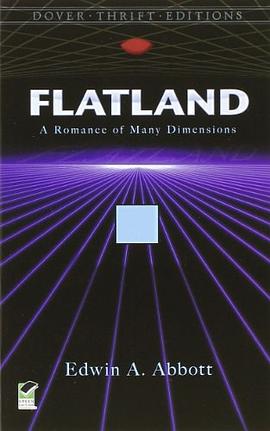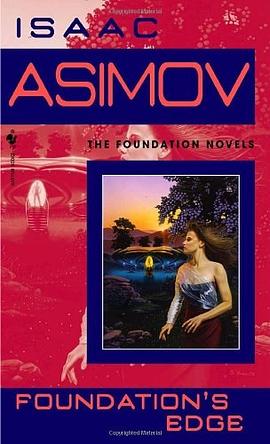

具體描述
'Upward, yet not Northward.' How would a creature limited to two dimensions be able to grasp the possibility of a third? Edwin A. Abbott's droll and delightful 'romance of many dimensions' explores this conundrum in the experiences of his protagonist, A Square, whose linear world is invaded by an emissary Sphere bringing the gospel of the third dimension on the eve of the new millennium. Part geometry lesson, part social satire, this classic work of science fiction brilliantly succeeds in enlarging all readers' imaginations beyond the limits of our 'respective dimensional prejudices'. In a world where class is determined by how many sides you possess, and women are straight lines, the prospects for enlightenment are boundless, and Abbott's hypotheses about a fourth and higher dimensions seem startlingly relevant today. This new edition of Flatland illuminates the social and intellectual context that produced the work as well as the timeless questions that it raises about the limits of our perception and knowledge. --This text refers to an out of print or unavailable edition of this title.
著者簡介
From Biography Base:
Edwin Abbott Abbott, English schoolmaster and theologian, is best known as the author of the mathematical satire Flatland (1884).
He was educated at the City of London School and at St John's College, Cambridge, where he took the highest honours in classics, mathematics and theology, and became fellow of his college. In 1862 he took orders. After holding masterships at King Edward's School, Birmingham, and at Clifton College, he succeeded G. F. Mortimer as headmaster of the City of London School in 1865 at the early age of twenty-six. He was Hulsean lecturer in 1876.
He retired in 1889, and devoted himself to literary and theological pursuits. Dr. Abbott's liberal inclinations in theology were prominent both in his educational views and in his books. His Shakespearian Grammar (1870) is a permanent contribution to English philology. In 1885 he published a life of Francis Bacon. His theological writings include three anonymously published religious romances - Philochristus (1878), Onesimus (1882), and Sitanus (1906).
More weighty contributions are the anonymous theological discussion The Kernel and the Husk (1886), Philomythus (1891), his book The Anglican Career of Cardinal Newman (1892), and his article "The Gospels" in the ninth edition of the Encyclopædia Britannica, embodying a critical view which caused considerable stir in the English theological world. He also wrote St Thomas of Canterbury, his Death and Miracles (1898), Johannine Vocabulary (1905), Johannine Grammar (1906). Flatland was published in 1884.
Sources that say he is the brother of Evelyn Abbott (1843 - 1901), who was a well-known tutor of Balliol College, Oxford, and author of a scholarly history of Greece, are in error.
圖書目錄
Section
1. Of the Nature of Flatland
2. Of the Climate and Houses in Flatland
3. Concerning the Inhabitants of Flatland
4. Concerning the Women
5. Of our Methods of Recognizing one another
6. Of Recognition by Sight
7. Concerning Irregular Figures
8. Of the Ancient Practice of Painting
9. Of the Universal Colour Bill
10. Of the Suppression of the Chromatic Sedition
11. Concerning our Priests
12. Of the Doctrine of our Priests
PART II: OTHER WORLDS
13. How I had a Vision of Lineland
14. How I vainly tried to explain the nature of Flatland
15. Concerning a Stranger from Spaceland
16. How the Stranger vainly endeavoured to reveal to me
in words the mysteries of Spaceland
17. How the Sphere, having in vain tried words,
resorted to deeds
18. How I came to Spaceland, and what I saw there
19. How, though the Sphere shewed me other mysteries
of Spaceland, I still desired more; and what came of it
20. How the Sphere encouraged me in a Vision
21. How I tried to teach the Theory of Three Dimensions
to my Grandson, and with what success
22. How I then tried to diffuse the Theory
of Three Dimensions by other means, and of the result
· · · · · · (收起)
讀後感
平面国,顾名思义,是一个仅存在于平面之中的国家,只有长度和宽度而没有厚度。国家里的女人们都是直线,智力低下,冲动而健忘。男人的多数是地位较低的等腰三角形,中产阶级则是等边三角形以上的规则图形,同时还有多边形乃至圆形的特权阶层。三角形男人顶角的大小决定了他们...
評分《生活大爆炸》里,谢耳朵有一次说:Sometimes when I feel stifled and want a change of scenery, I use my imagination. One of my favorite places to visit is the two dimensional world described in Edwin Abbott's mathematical fantasy, "Flatland." 这本一百多年以...
評分 2007年5月31日,徐贲先生论及小资群众(群众中的一类)的喜好,说他们最厌恶的人就是小职员,如契诃夫作品中的人物……忽然他提及了一本书,名为《Flatland》,作者是19世纪的一个英国牧师,Edwin A.Abbott。书名直译为《平地》或《平面国》。 设想平展着一张极大...
評分 2007年5月31日,徐贲先生论及小资群众(群众中的一类)的喜好,说他们最厌恶的人就是小职员,如契诃夫作品中的人物……忽然他提及了一本书,名为《Flatland》,作者是19世纪的一个英国牧师,Edwin A.Abbott。书名直译为《平地》或《平面国》。 设想平展着一张极大...
評分封底 在一维世界的人看来,能前后左右移动的人是神,因为他能突然出现又突然消失(移到直线的左边或右边,直线国的人就看不见你了);在二维世界的人看来,能上下移动的人是神,因为他能突然出现又突然消失(移到平面的上方或下方,平面国的人就看不见你了);那在我们这个三维...
用戶評價
內容很有趣,開始時對我來說語言有點難,後半本不知是習慣瞭還是劇情展開瞭完全不覺語言障礙瞭
评分科幻。但是溫和地讓人認識自己的局限,引導人開拓視野、轉換思維方式,語言簡潔生動,算是難得一見的好書。
评分kindle有免費公版書~
评分內容很有趣,開始時對我來說語言有點難,後半本不知是習慣瞭還是劇情展開瞭完全不覺語言障礙瞭
评分有趣的想象,俺小時候怎麼就看不到這類書呢
相關圖書
本站所有內容均為互聯網搜索引擎提供的公開搜索信息,本站不存儲任何數據與內容,任何內容與數據均與本站無關,如有需要請聯繫相關搜索引擎包括但不限於百度,google,bing,sogou 等
© 2025 book.quotespace.org All Rights Reserved. 小美書屋 版权所有




















